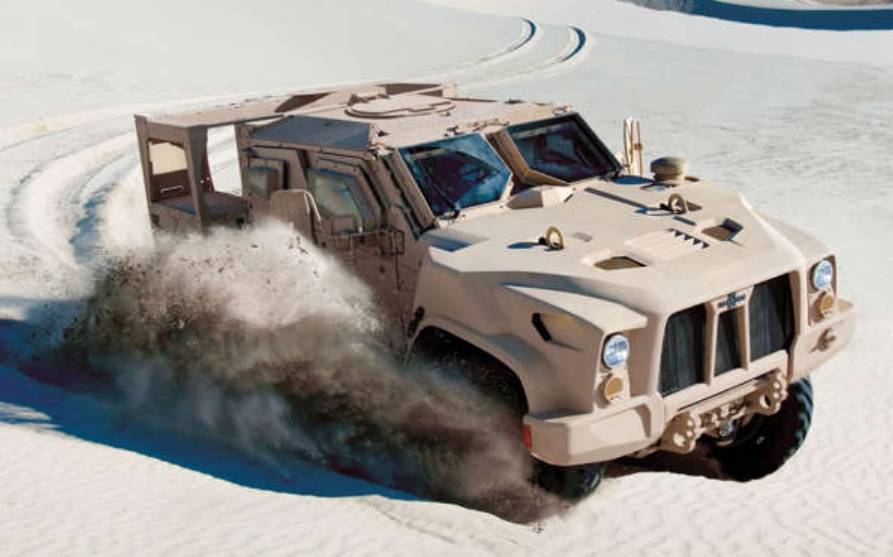
The successor to the legendary US Army Humvee is now also available as a hybrid. This means that it can go into action purely electrically.
In 2015, Oshkosh Defense was able to look forward to an order worth billions: Oshkosh was awarded the contract by the US government authorities from the last remaining bidder trio of Oshkosh, Lockheed Martin and AM General. Since then, the Oskosh JLTV (Joint Light Tactical Vehicle) has gradually replaced the HMMWV (colloquially Humvee), the military version of the Hummer, in the US military.
The HMMWV has had its day

The restructuring was necessary not only because of the age of the Humvee fleet (the first models entered service in 1983), but also because of the limited capabilities of the vehicle. On the one hand, the HMMWV is designed as an unarmored vehicle, on the other hand it is extremely maintenance-intensive and prone to repairs. And he uses too much. In addition, its off-road capabilities were drastically reduced by retrofitted armor. A new generation of vehicles aims to change these shortcomings.
The Oshkosh JLTV builds quite a bit larger than the Humvee. The vehicle has a height-adjustable suspension with an adjustment range of 508 millimeters. The adjustability allows the JLTV to be lowered for transport and raised off-road. Not only is the body armored, the seats are also secured against explosives, and there is also an automatic fire extinguishing system.
Oshkosh JLTV with over 300 hp

The Oshkosh JLTV is powered by a good friend: General Motors supplies the 6.6 liter V8 diesel with the designation Duramax, which delivers up to 305 hp and 705 Newton meters of torque. The diesel giant usually powers the large pickup trucks from Chevrolet and GM, and was developed together with Isuzu.
The Oshkosh JLTV has a few more special abilities to offer. A permanently installed generator, which is probably powered by a methanol fuel cell, can be used as a power source. Various cameras, including those with infrared vision, will be installed. Various communication systems including satellite telephony are available and protected against external interference.
In a first tranche, Oshkosh is to deliver around 17,000 JLTV vehicles to the various branches of the US military. The contract, which currently runs until September 2022, was valued at $6.7 billion. Up to around 50,000 additional vehicles are also planned to be delivered by 2040.
In January 2022, Oshkosh introduced a new variant of the JLTV, the E-JLTV. The V8 diesel is accompanied by an additional electric motor that can also work as a generator at the same time. A 30 kWh lithium-ion battery stores the driving current when the combustion engine is running. There is no external charging option, so the E-JLTV is a hybrid, but with an exceptionally large traction battery for an HEV. Around 20 percent fuel savings should be possible through the hybrid technology.
In addition to being able to drive silently during operations without the heat signature of a combustion engine, the E-JLTV can also provide on-board power for a correspondingly long time, for example on an observer mission, thanks to its large battery. The vehicle can also be used as a power generator in the field: the E-JLTV provides up to 115 kW of power when the diesel engine is running via an external connection and can thus secure the power supply in a camp, for example. The E-JLTV is not currently part of the supply contract for the US Army, but Oshkosh hopes that the contracts will be supplemented accordingly.






